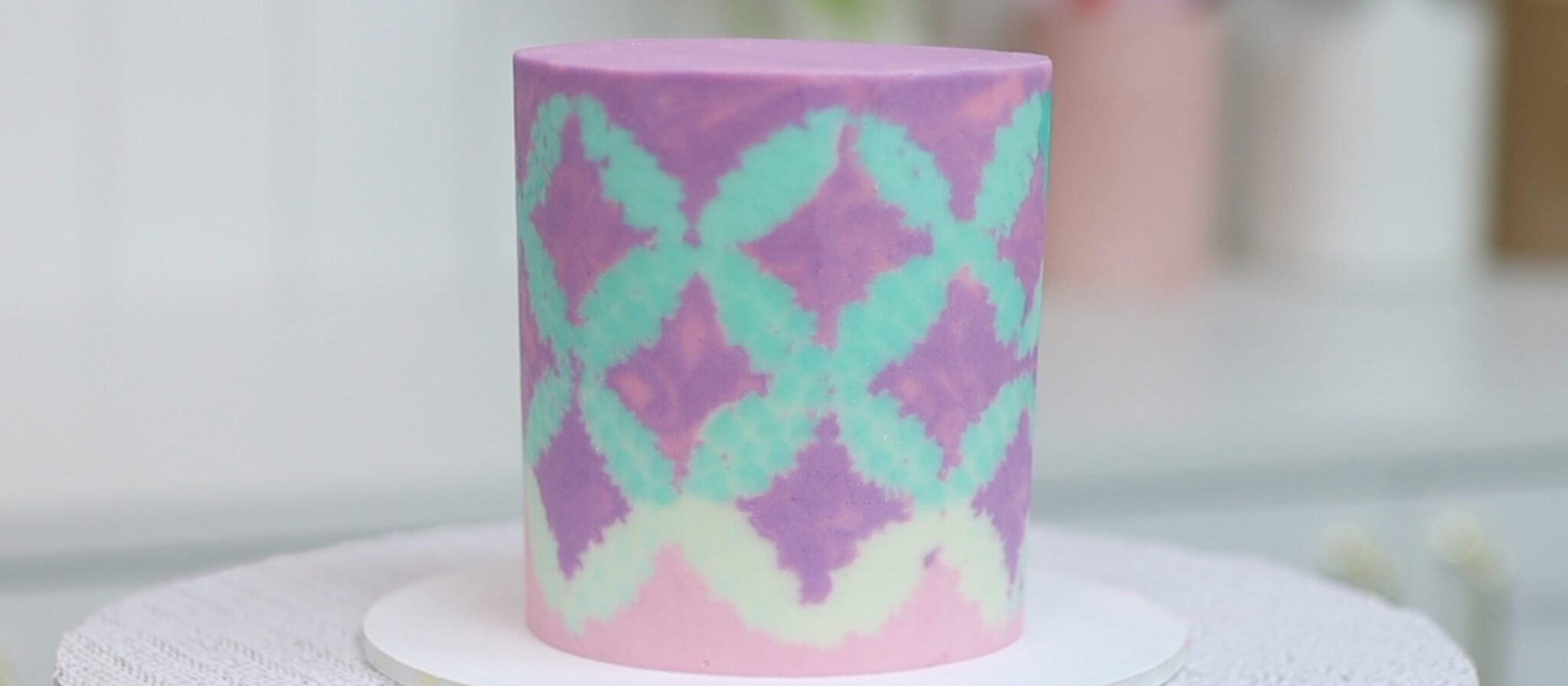
Turn piping into flat patterns on cake like stripes, circles, diagonals and triangles by giving the frosting a facelift! In this tutorial I’ll show you everything you need to know about this technique.
After assembling your cake, cover it in a thin layer of frosting. This will trap any crumbs that might come off the cake and give the cake a neat shape. It doesn't have to be perfect but it’s important that the sides are straight and smooth.
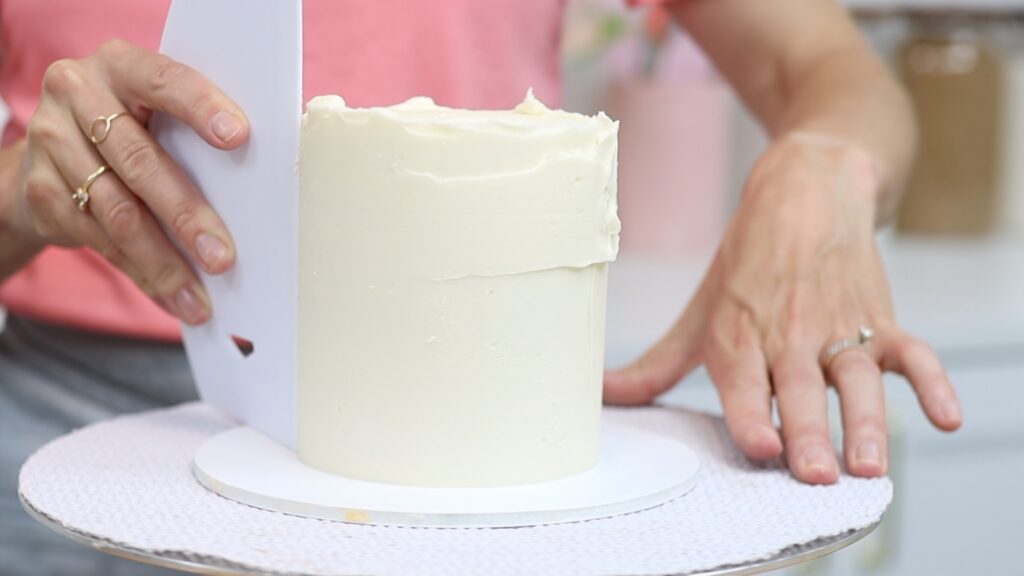
Before creating flat patterns on cakes, I really recommend marking or scoring your pattern into the frosting.
A pattern is an arrangement of lines or shapes repeated at regular intervals. This means the placement and spacing of each shape is really important. If you try to freestyle a pattern and the shapes are different distances apart from each other, it won’t look like a pattern.
So, how can you make sure the shapes of a pattern are spaced evenly? Here are three methods:
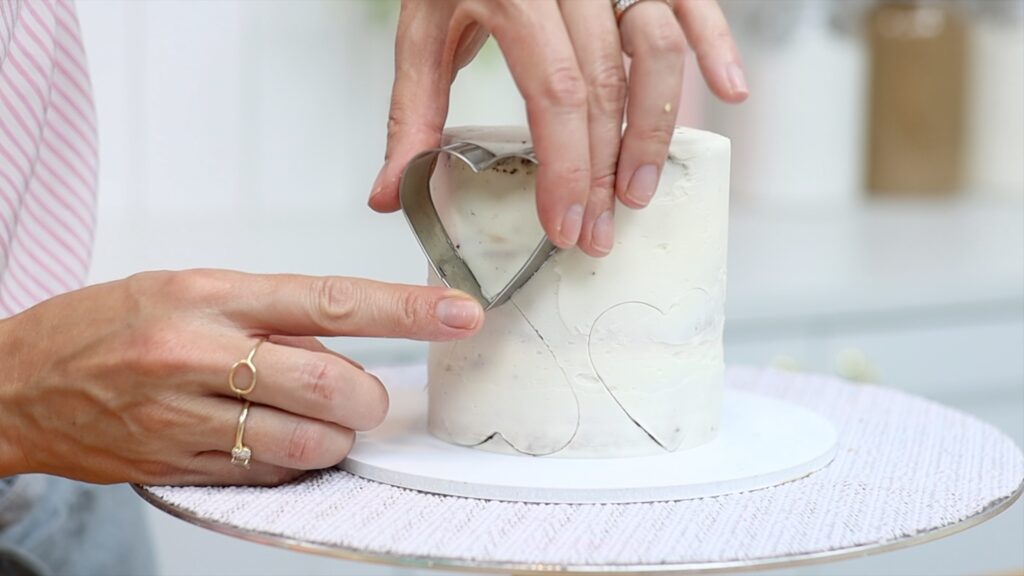
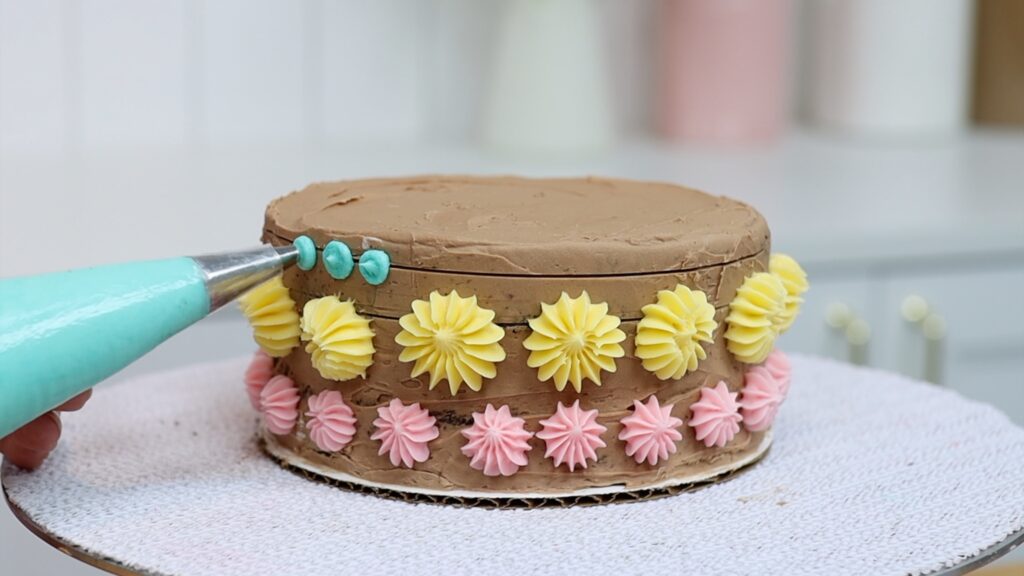
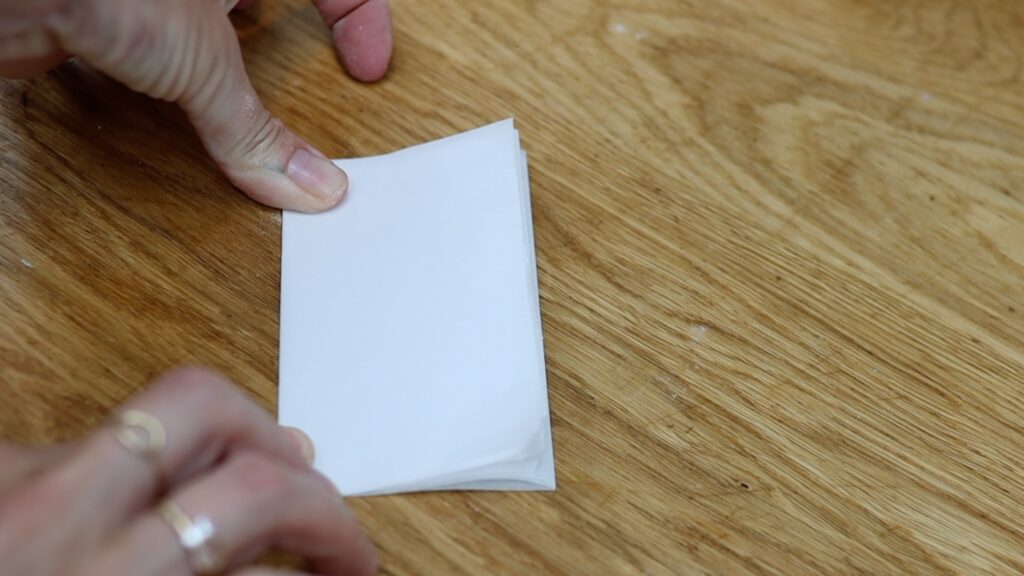
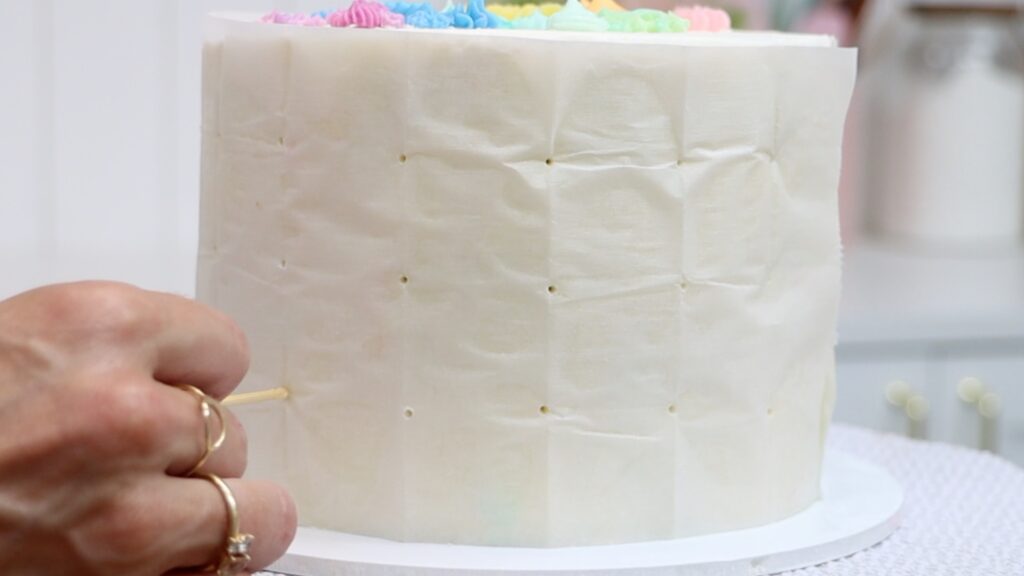
To create flat patterns on cake, begin with piping. You'll use piping bags to pipe the pattern onto the cake. There are lots of ways to prepare the colours and the most obvious is to tint each colour individually and use several piping bags with different piping tips.
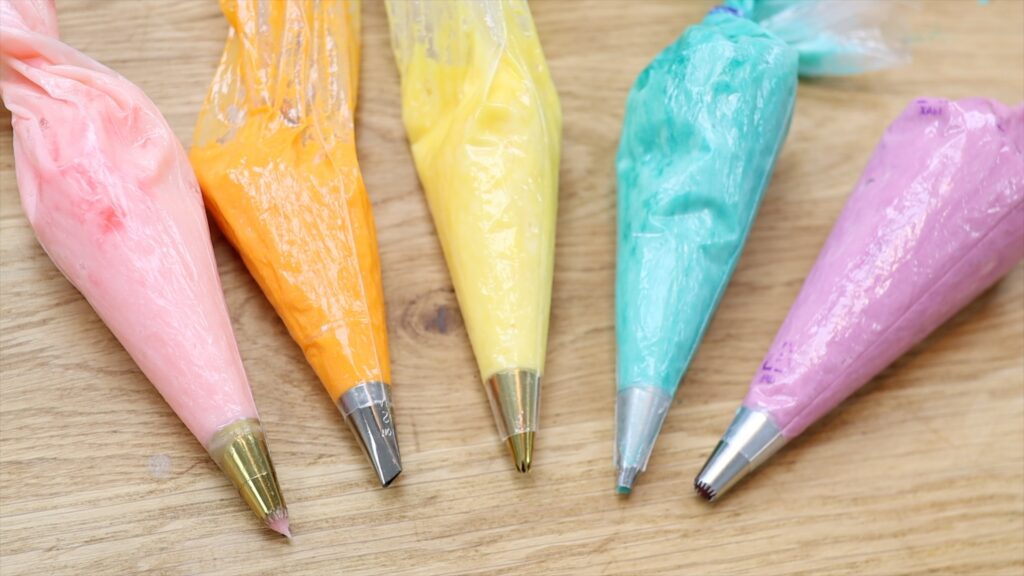
To create different shades, use different amounts of the same colours. I like to mix small amounts of buttercream in a cupcake pan so I don’t have to wash lots of bowls afterwards!
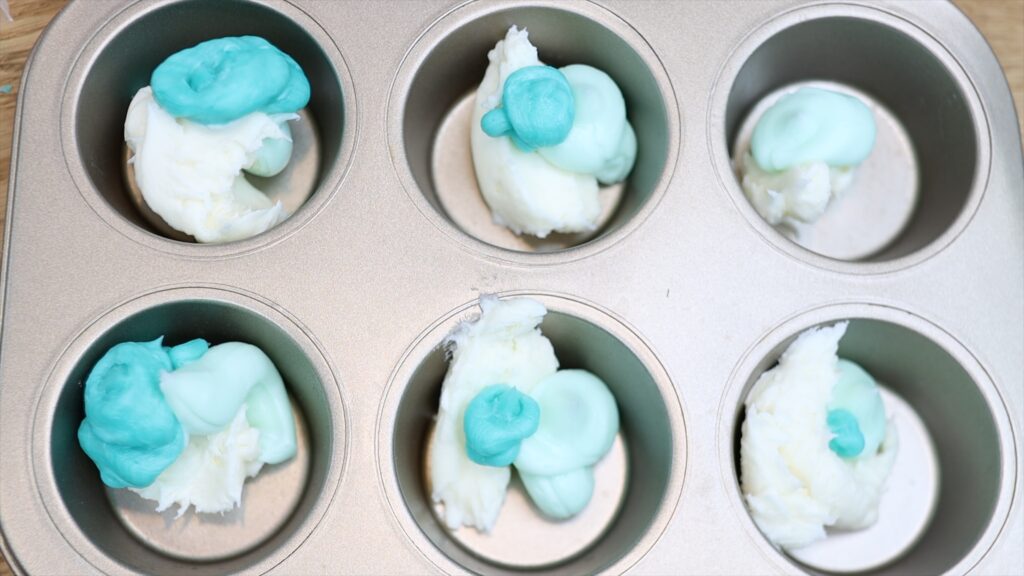
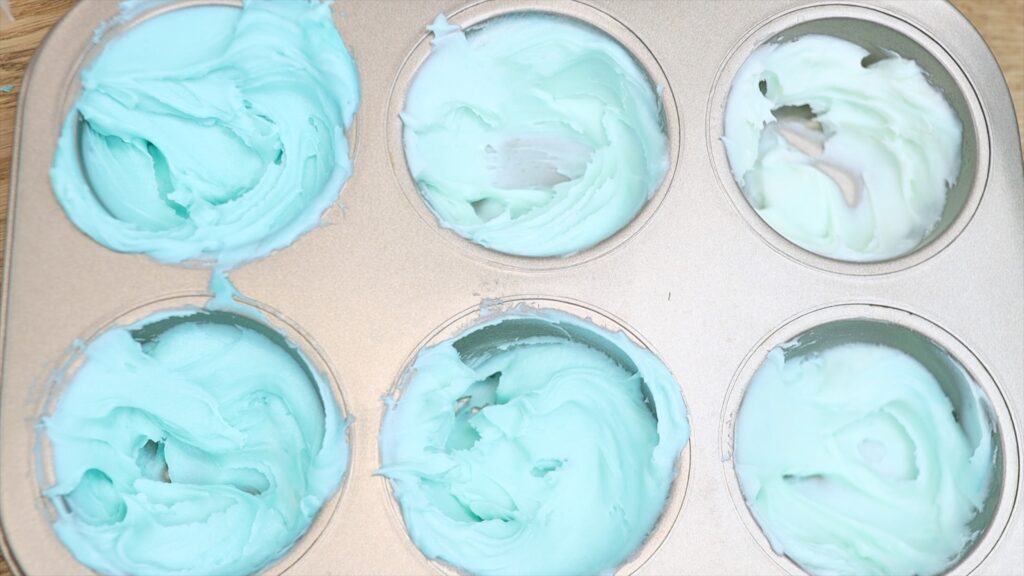
You can mix different colours in just one bowl by starting with the lightest colour. Scoop some into a piping bag, add more gel to make the next colour, and repeat.
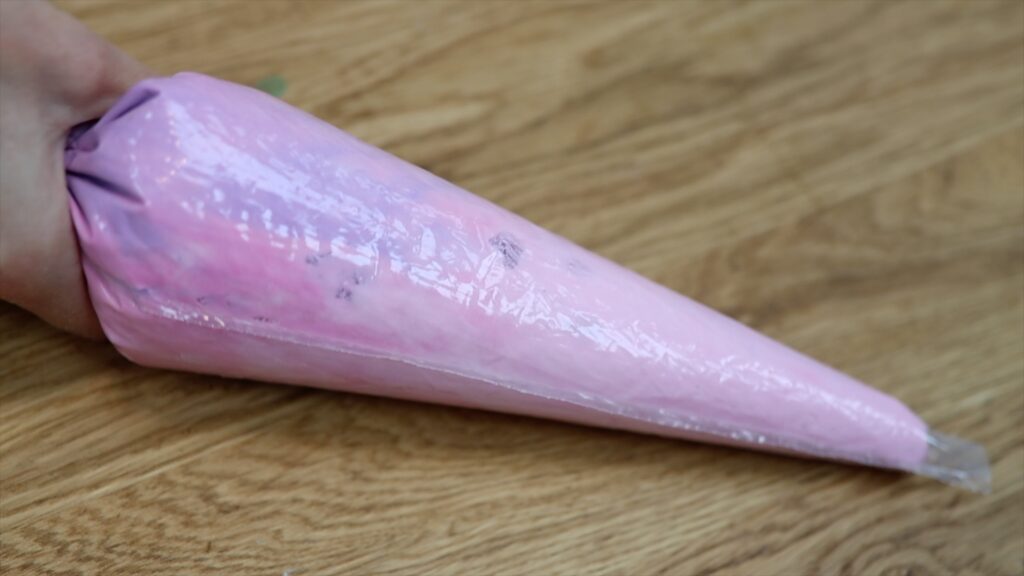
Layer different colours within the same piping bag to create a gorgeous ombre effect with your piping. Lay out of piece of plastic wrap and spoon or spread or pipe your colours side by side onto it. You can use different colours or different shades of the same colour, from light to dark or dark to light.
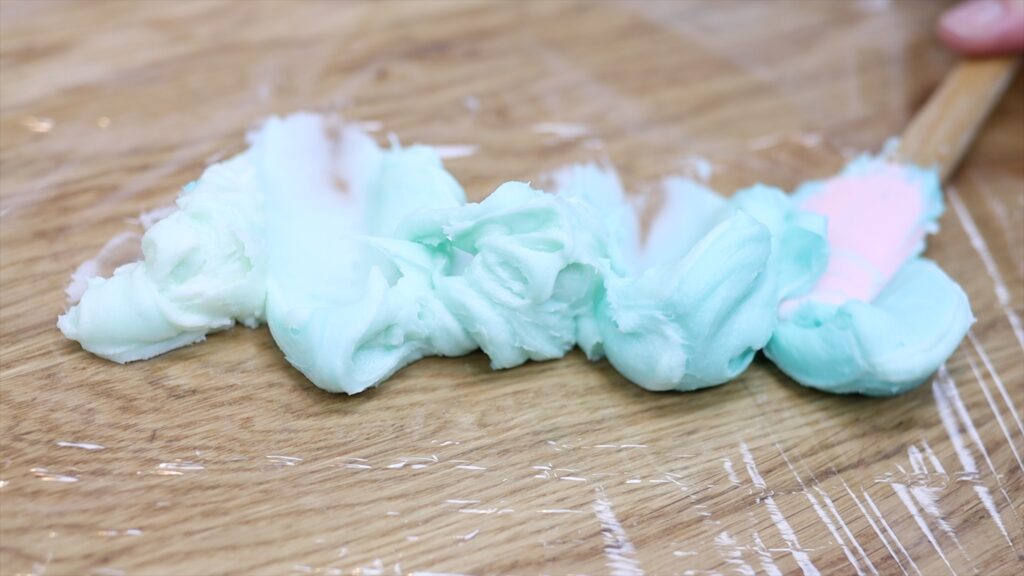
Lift up the plastic wrap around the colours and roll it into a log.
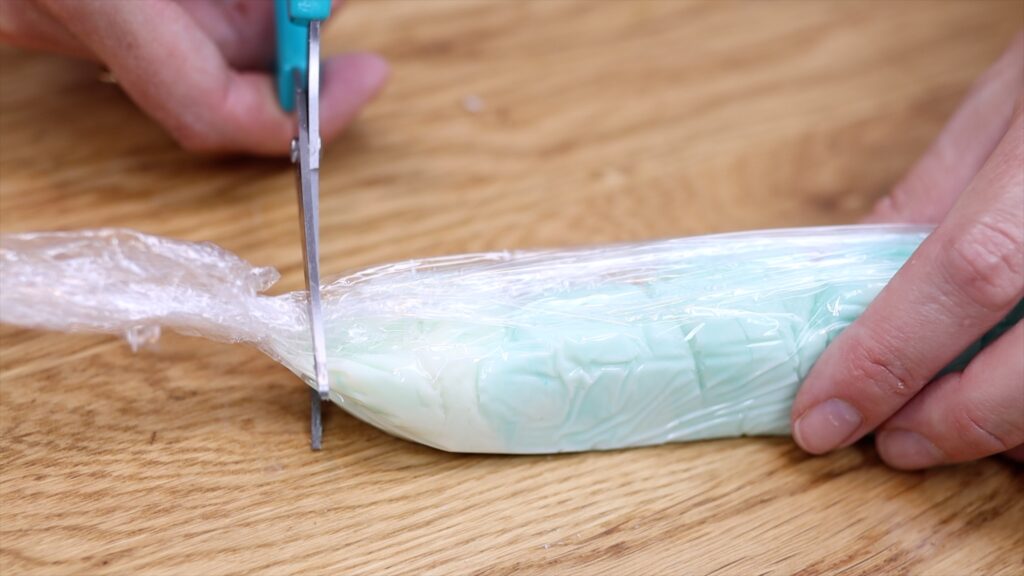
Cut off the end that you’re going to pipe first and drop that end down into the piping bag. The shades will be layered neatly within the piping bag. They will come through after each other but they’ll also blend slightly, which you’ll see on the cake with the circular pattern.
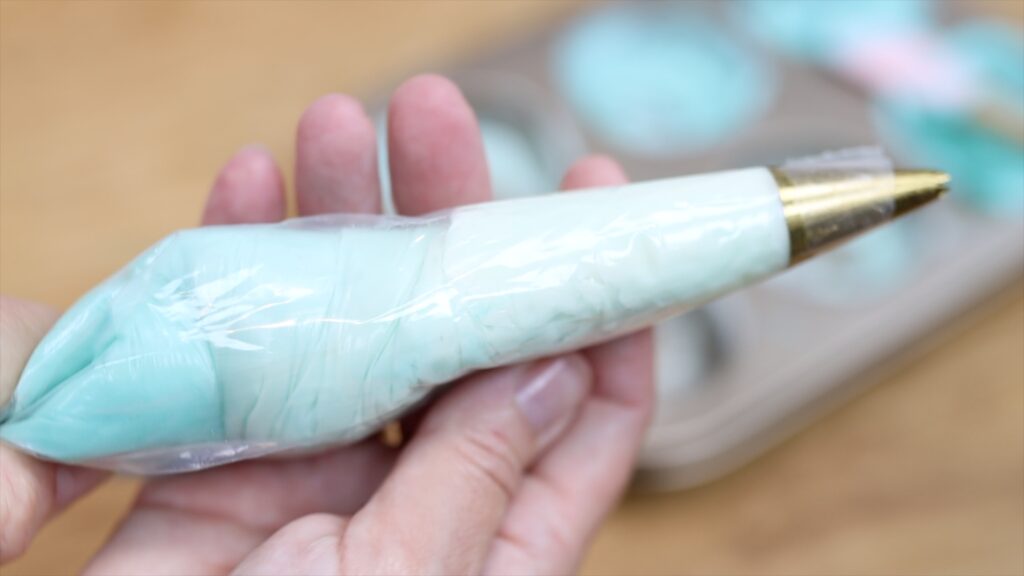
You can skip the plastic wrap and just spoon the colours straight into the piping bag. The colours won’t layer as neatly as they do in the plastic wrap log. You can see this in the piping bag below and you’ll see the result on the circular pattern.

I'm using my 4 Minute Buttercream for all of the cakes in this tutorial. How much buttercream do you need? If your pattern only covers a small part of the cake, you only need a spoonful of buttercream. If the pattern covers most of the surface of the cake you’ll need more buttercream. It's best to always fill your piping bag between one third and two thirds full so that you can comfortably hold and squeeze it.
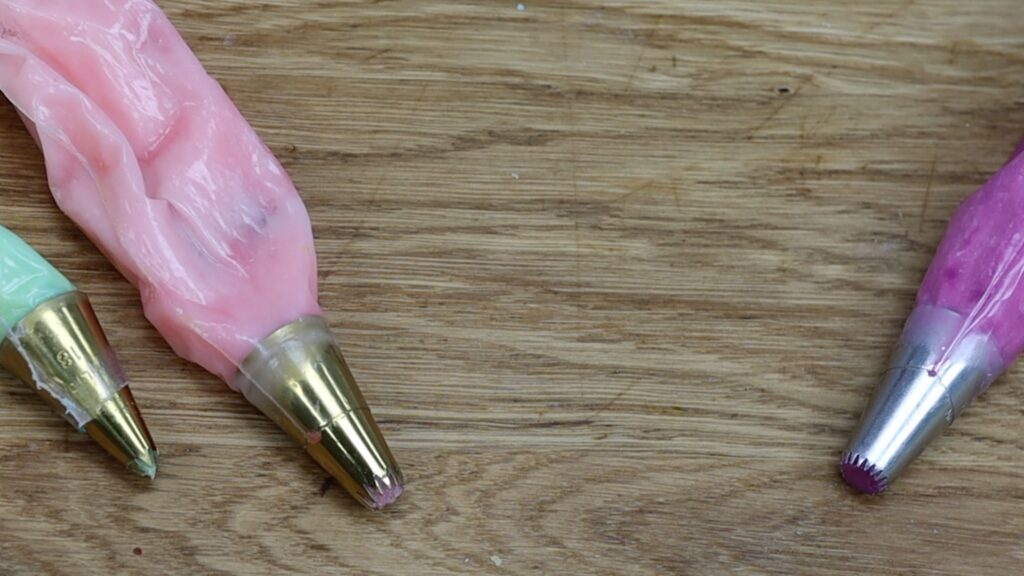
You’ll see the results of different piping tips in these patterns. For star tips, choose ones with long prongs that are spaced widely apart from each other. These will give you better results than tiny, tight prongs, where the details tend to get lost and piping looks like circles.
Ok, let’s start piping! Like I mentioned, flat patterns on cake begin with texture. Using the markings you made on your cake, pipe the pattern you’ve chosen.
Aim to pipe everything the same thickness. When you take off the outer layers of this piping, if some parts of the piping are thicker than others you’ll have to take off lots of that piping to get level with the rest of the piping. This will make more sense in a minute!
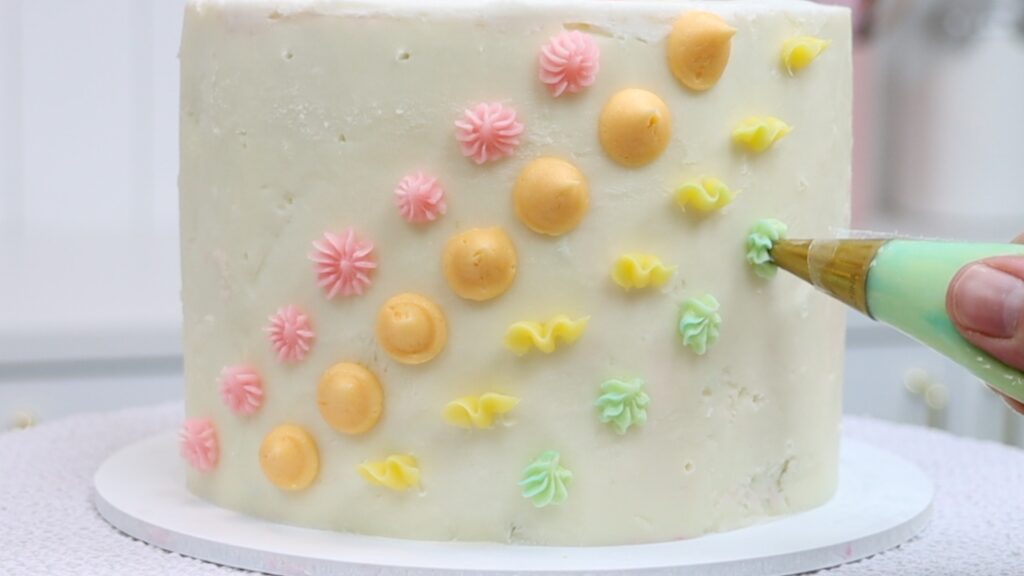
Keep in mind that this technique works best for fairly simple patterns with space in between each detail. Also, the part of the piping that is visible now will not be visible at the end. The peak or tip or outer edge is going to disappear when you flatten your pattern so don’t worry about that part. For example, the peaks on rosettes don’t all need to point in the same direction.
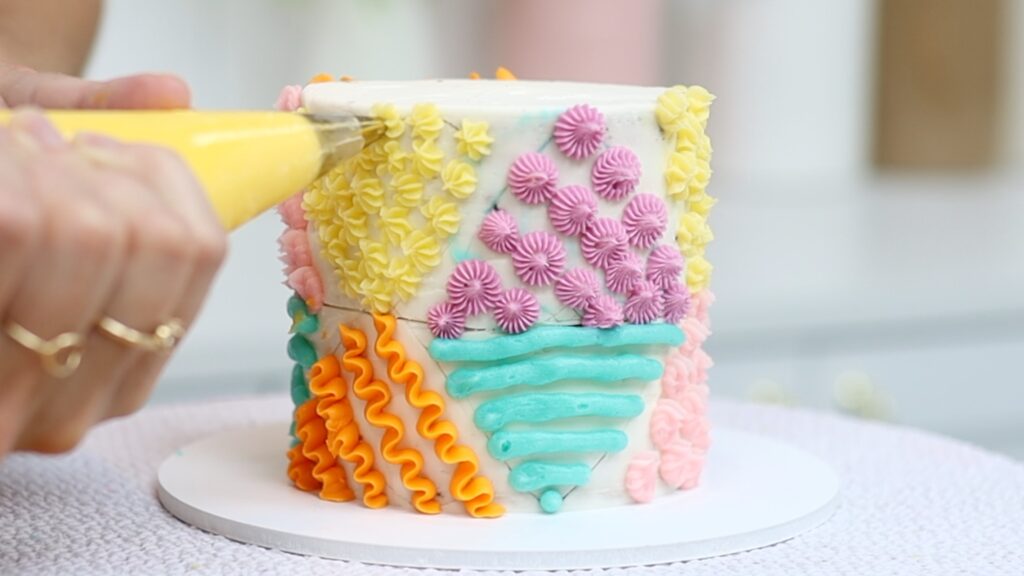
For the circular pattern below I’m using a star shaped tip to fill in the areas where the circles overlap. I’m using the plastic wrap method for an ombre effect, starting with the lightest shade at the bottom of the piping bag. When you finish a section and you want the colour to get darker, squeeze some of the buttercream out of the bag until you see it getting darker. Then pipe the next section.
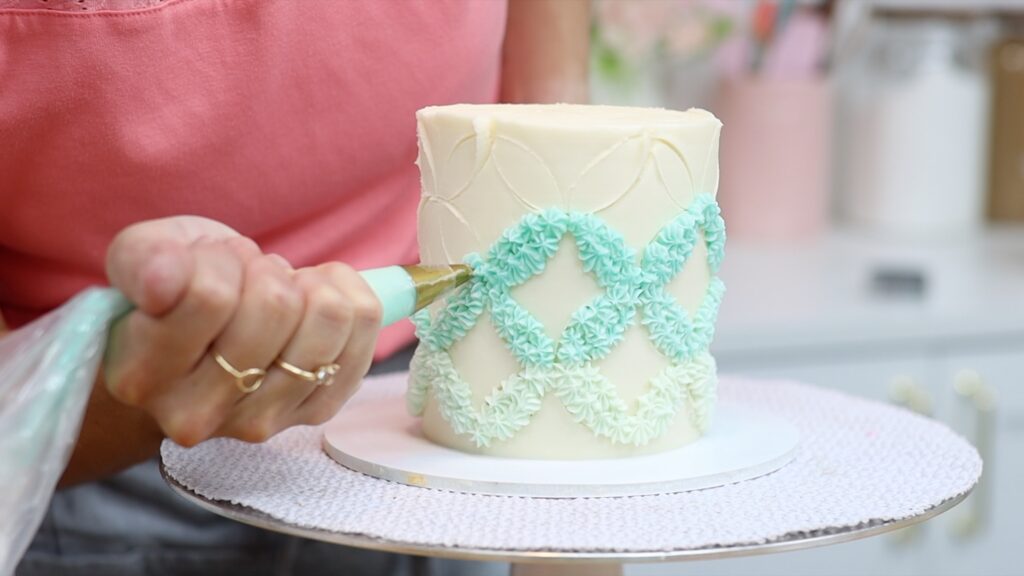
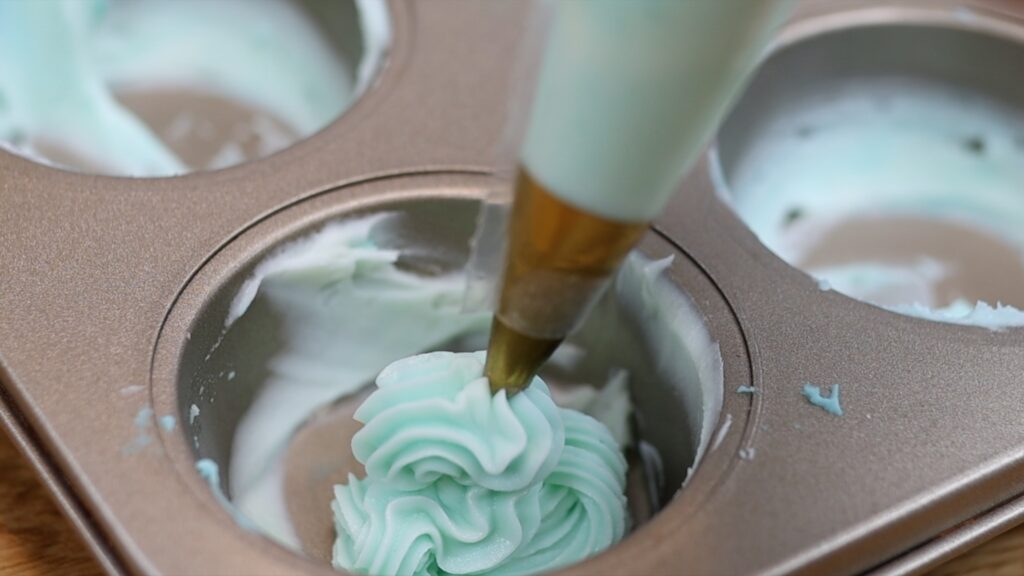
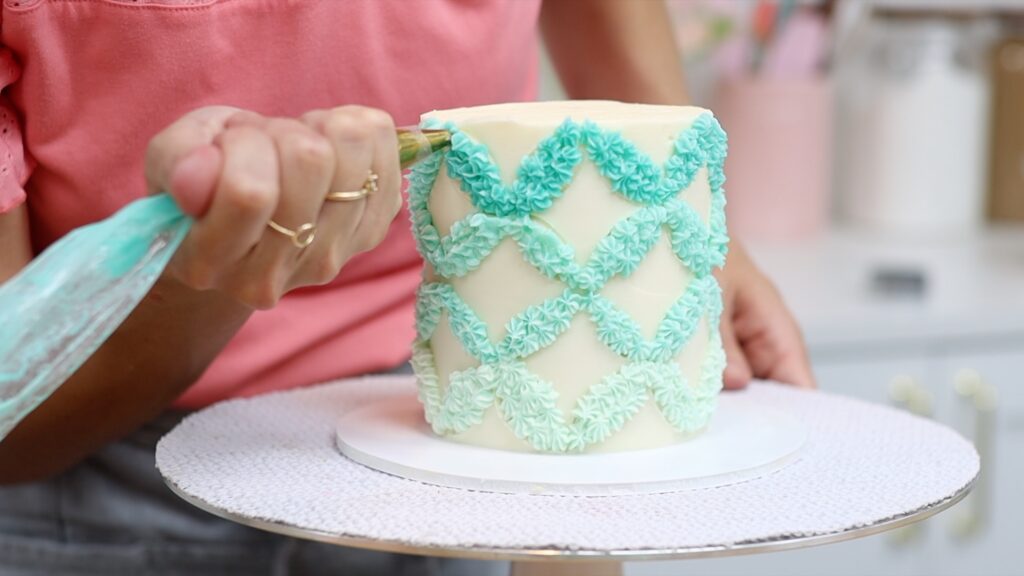
Unlike the other two cakes, this piping isn’t spaced apart. The star shapes will blend together when I flatten the pattern and their shape will only be noticeable around the edges of each section of piping.
These stripes, triangles and circles are just a few examples of flat patterns on cake. The possibilities are endless! Find more ideas in this tutorial on facelift frosting and on my cake school!
After piping all of the details of your pattern, chill this part before adding the background colour or colours. Put the cake in the freezer for 15 minutes so that the piping becomes firm.
When you can touch the piping without damaging it, cover the cake with your background colour of frosting. It's best to use a piping bag because it applies the least pressure to the piped pattern. If you spread it straight on, your
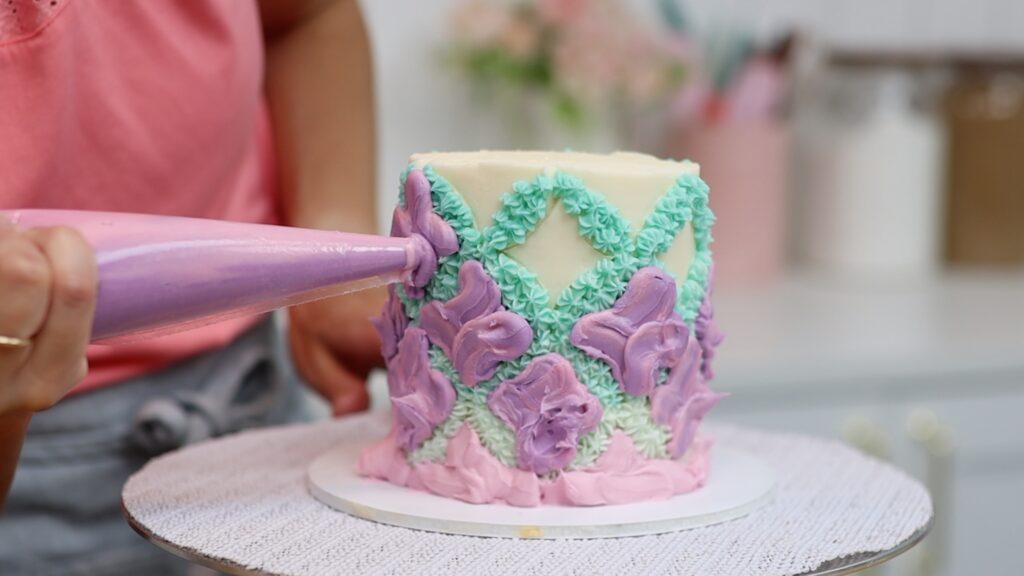
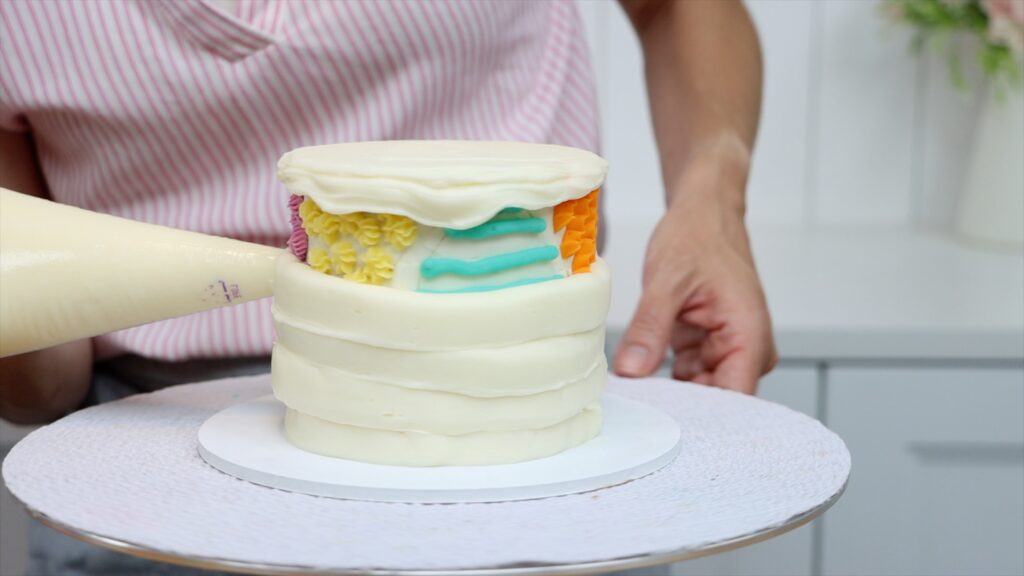
Cover the top of the cake as well and then smooth the top. I like to start with the top of the cake because you’ll prevent dropping edges, getting sharper edges around the top of the cake this way.
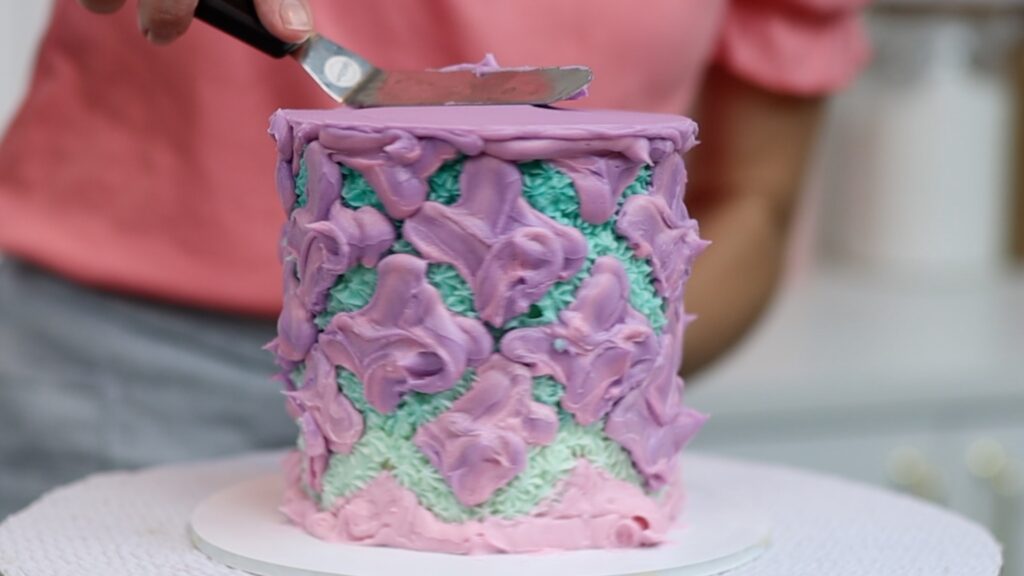
This frosting you've just piped onto the cake will be the background colour of your pattern. It will cover up your piping for now, but not for long! Spread the frosting gently to push it into any gaps within the piping and also to scrape off the excess. You'll leave a relatively level, smooth layer of frosting on the cake. Don’t press hard enough to touch the piped pattern because if any parts of that piping break off, you’ll spread those pieces around the cake and you’ll end up with unexpected details in your pattern!
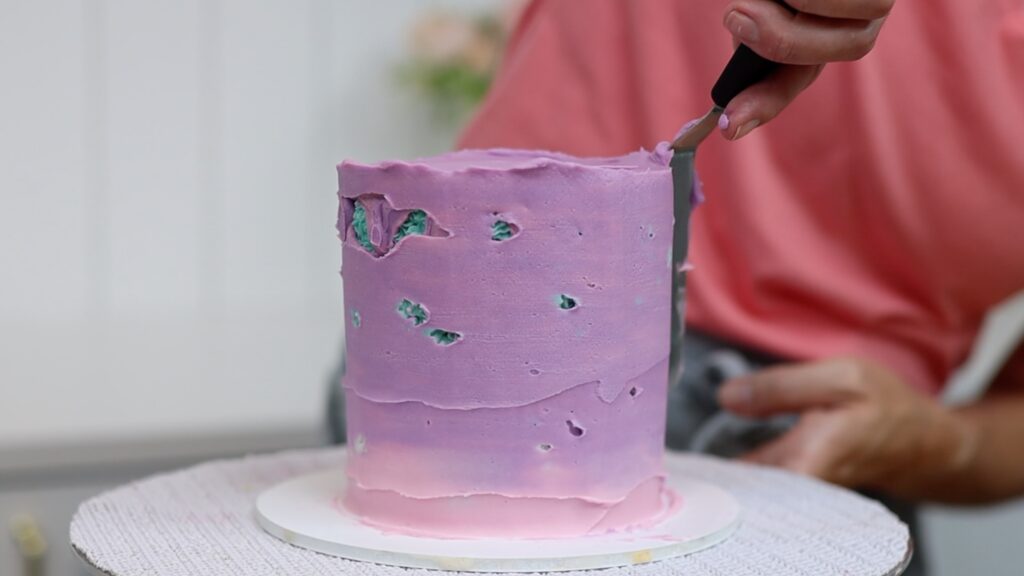
Now put the cake in the freezer for 20 -30 minutes, until this frosting is cold and firm. The time depends on how cold your cake layers already are. You don’t want to freeze the frosting completely because it will be much harder to remove the outer layers when they’re frozen.
Ok, here comes the really fun part! Let’s give this frosting a facelift! Pour boiling water into a cake pan wide enough to fit the edge of a metal cake comb into. Leave your comb in the water while you take your cake out of the freezer. Then dry the comb on a towel or paper towel and scrape around the cake. This is a process, and you’ll question it during the first few scrapes!
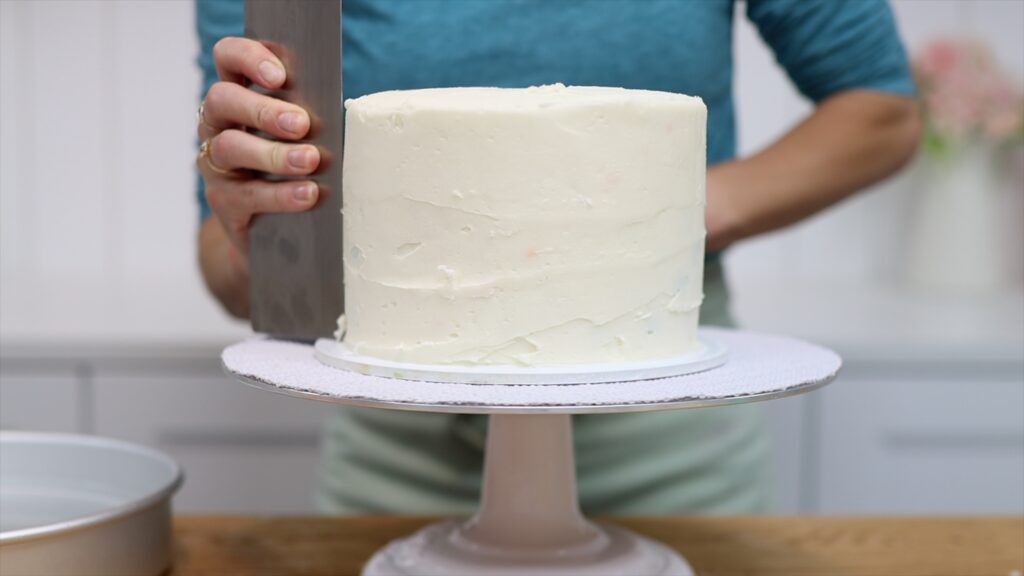
The hot metal will take off layer after layer of frosting, revealing the colours of your piping. Keep scraping, taking off the top layers of the piping to reveal a cross section, which will be the middle part of whatever shape you piped. You’re giving the frosting a facelift!
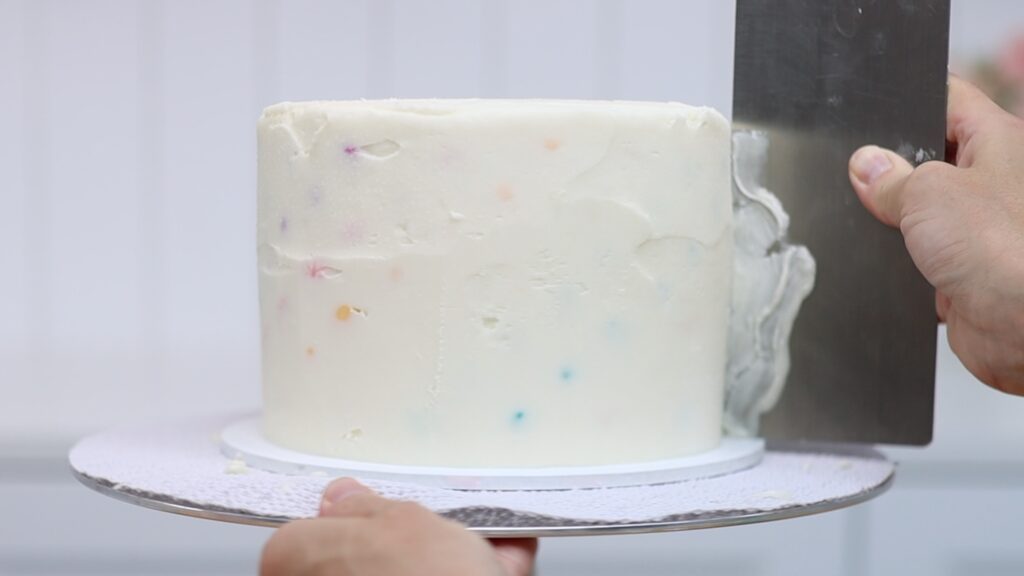
Different parts of your pattern might become visible before others. Where you spread the background colour more thickly over the piping, you'll have to scrape more off before the pattern will show through. Scraping up the sides of the cake is the quickest way to remove the outer layers. Then scrape around the cake to smooth the sides.
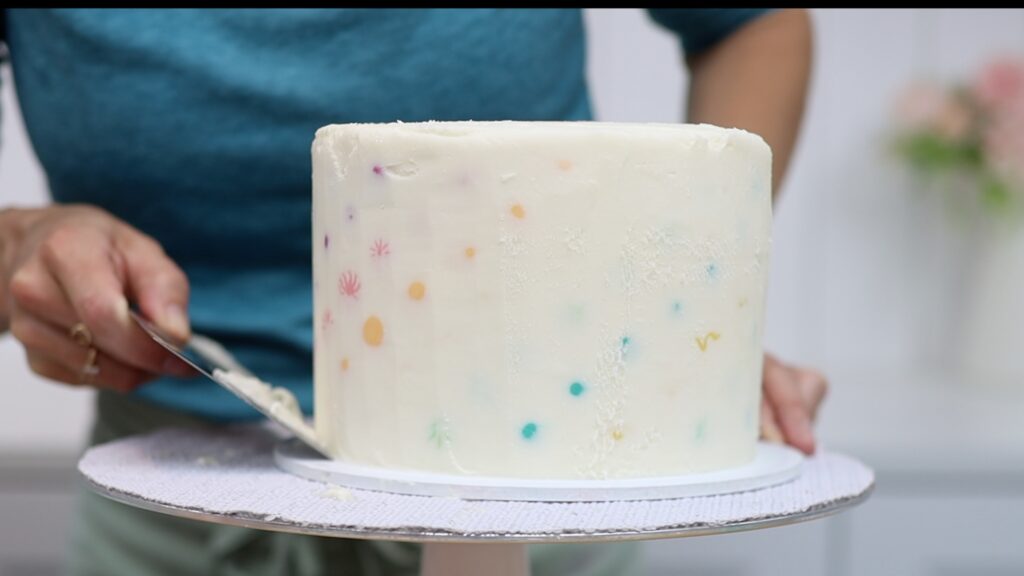
Any indents in the frosting are caused by air pockets within the frosting or where the frosting isn’t as thick as on the rest of the cake. Fill them in by piping or spreading more buttercream of whatever colour that part of the pattern should be. For the details of the pattern, use the leftover buttercream in your piping bags. For the background colour, use those leftovers.
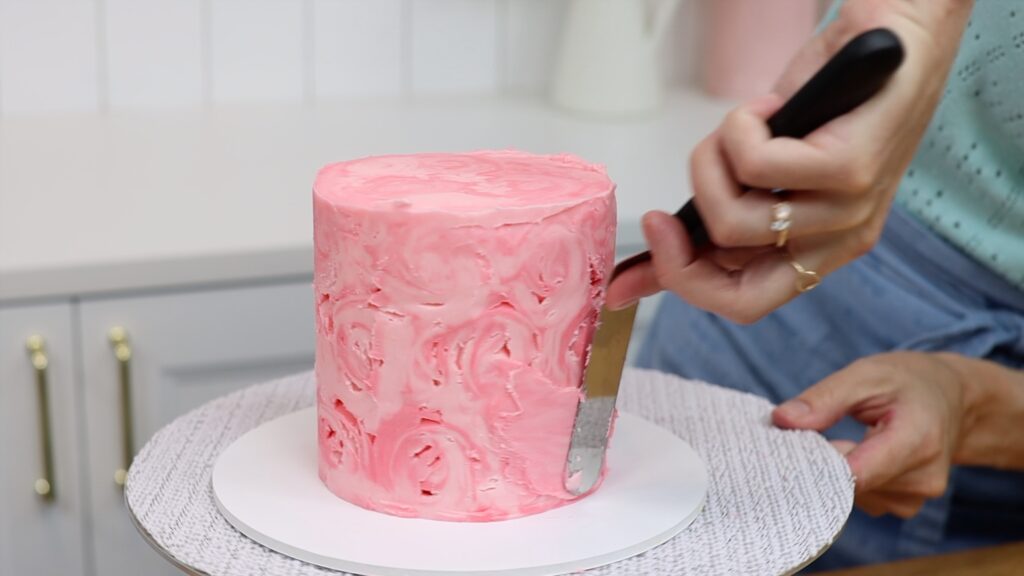
Then scrape again straight away to take off the excess. Now the pattern should be visible and also smooth because that buttercream you just spread or piped on has filled in the indents.
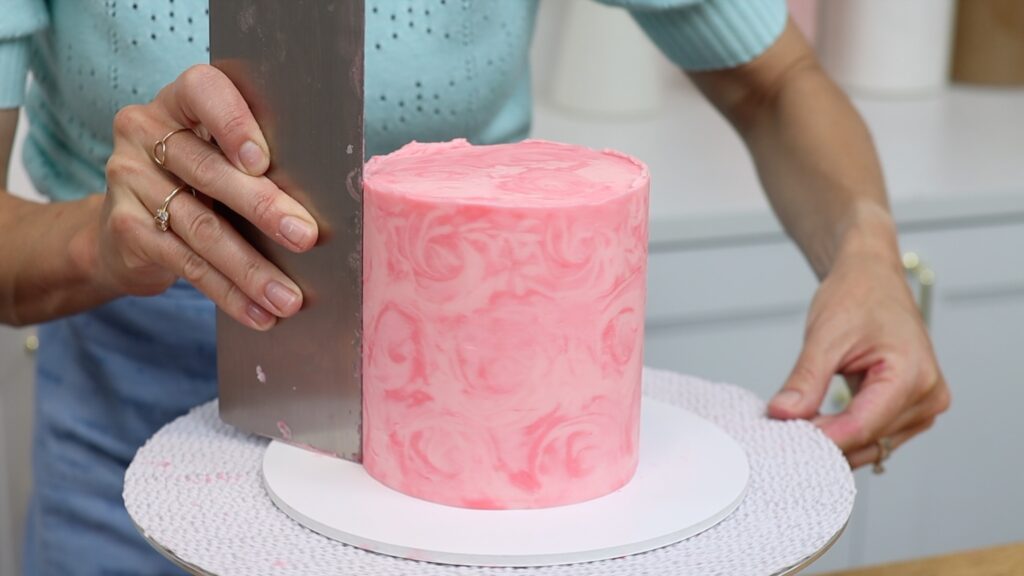
Now you have a perfectly flat buttercream pattern on your cake, which looks like it’s been printed or painted on!
I can’t wait for you to try this technique! Tell me in the comments when you create your own flat patterns on cake and tag @britishgirlbakes or #faceliftfrosting in your photos on social media so I can see your creations!
Visit my cake school to learn more fun cake decorating techniques, all broken down step by step, showing all of the little details so that you can use the techniques to make your own cake masterpieces!
You can also watch a video of this tutorial on how to make flat patterns on cakes using the facelift frosting technique:
